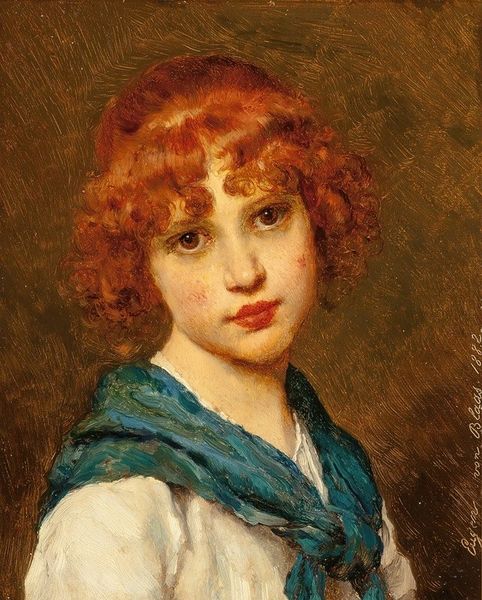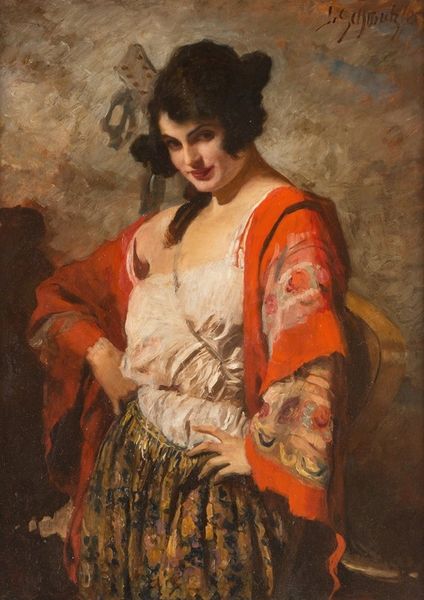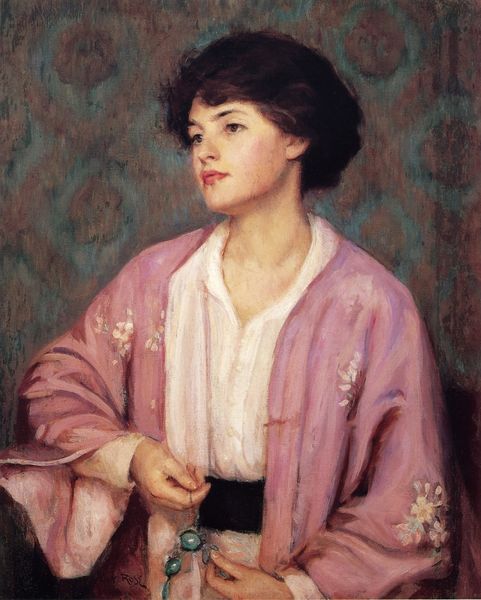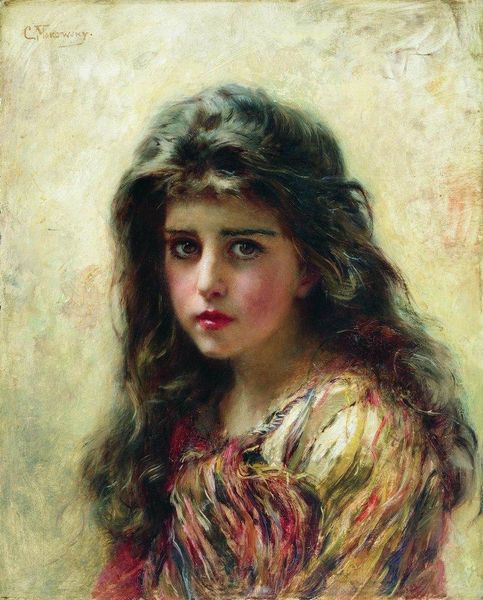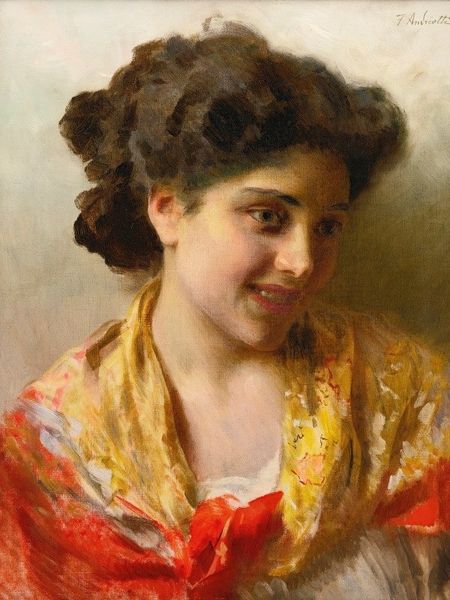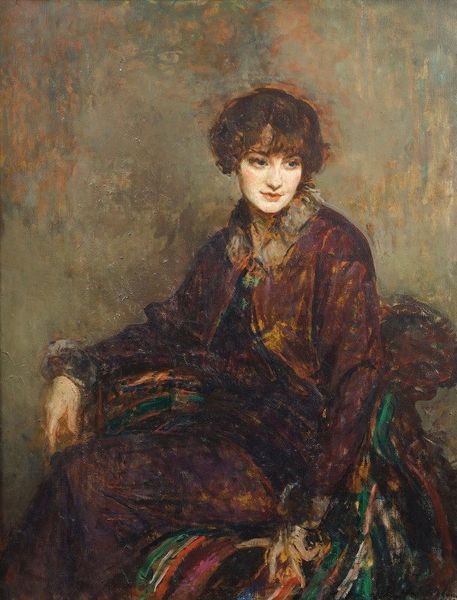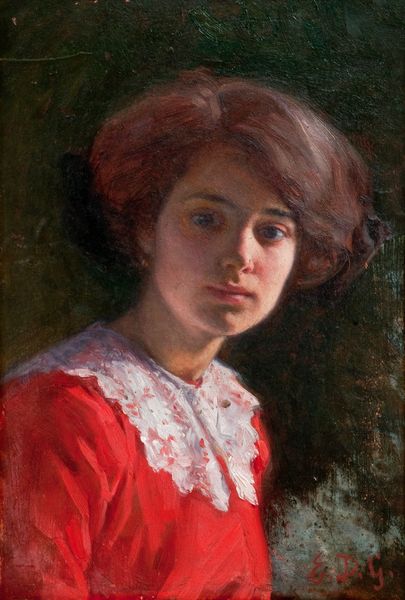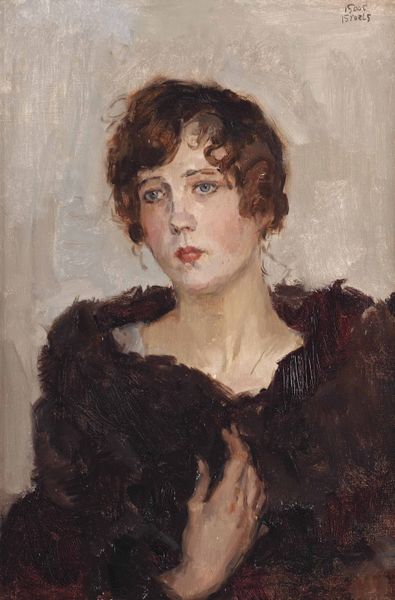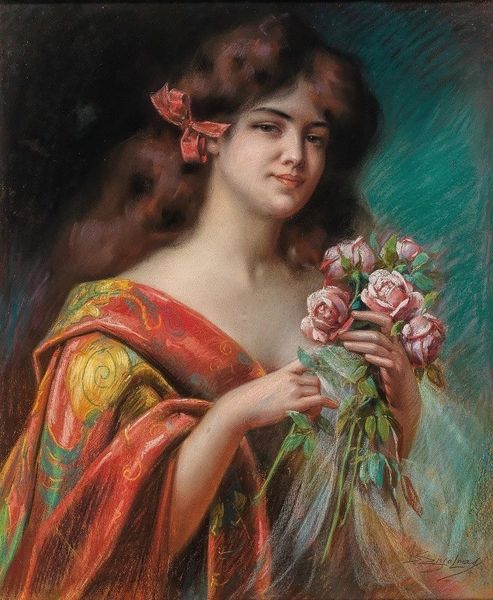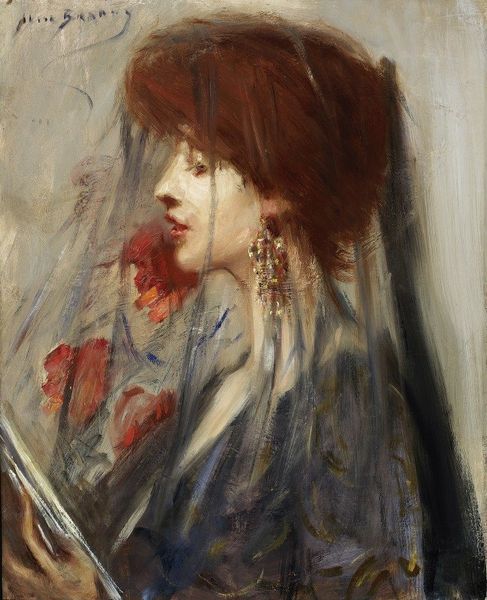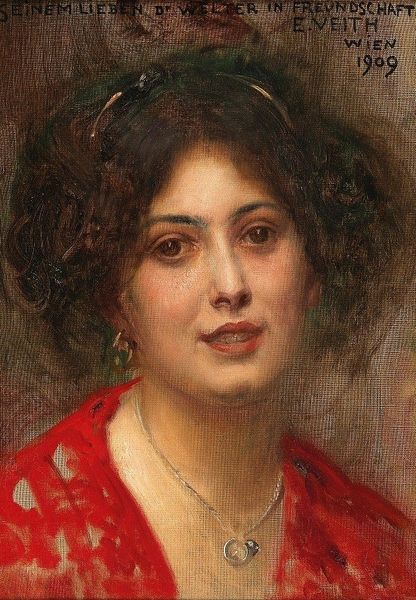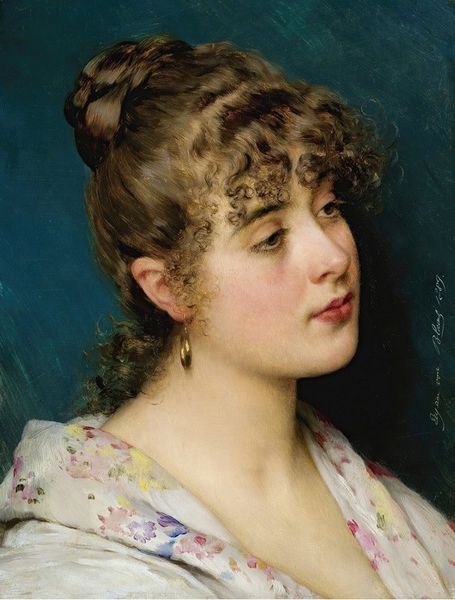
painting, oil-paint
#
portrait
#
figurative
#
portrait
#
painting
#
oil-paint
#
portrait reference
#
portrait head and shoulder
#
romanticism
#
animal portrait
#
animal drawing portrait
#
portrait drawing
#
genre-painting
#
facial portrait
#
academic-art
#
portrait art
#
fine art portrait
#
digital portrait
Copyright: Public Domain: Artvee
Curator: This is Eugen von Blaas' "Gypsy Girl", an oil on canvas painting. What catches your eye first? Editor: The model's gaze is very compelling; she looks a little apprehensive, even burdened, despite the vibrant colors surrounding her face. It strikes me as melancholic. Curator: It is certainly evocative. Consider how von Blaas, known for his idealized genre scenes, positions the figure. Her vibrant shawl, almost a symbol of perceived Romani flamboyance, contrasts with her subdued expression. Do you think that contrast carries intentional meaning? Editor: I think that juxtaposition is very important. I find it to be unsettling how the painting romanticizes an ethnic identity through the young woman’s perceived exoticness without giving any representation to the difficult and historical reality surrounding her identity. Her beauty is rendered for the sole sake of display, an example of art for the male gaze. Curator: Indeed. And in those images, the shawl becomes more than just fabric; it transforms into a marker. We should observe how patterns have been used in different eras and social settings to communicate everything from status and beliefs, to, perhaps problematically here, an entire cultural identity. Editor: That’s right! By isolating her in the composition, we almost strip away the background necessary to understand the cultural narrative of which this character may actually be a part. What purpose do you think this visual fragmentation of identity is supposed to convey? Curator: Perhaps it served to distill the ‘essence’ of Romani identity into a single figure for the viewer. Think of academic art and romanticism's interest in the “picturesque”. Although beautifully painted, one could say that it might reinforce stereotypes rather than fostering a genuine understanding. Editor: Yes, you've made a very important point. Her perceived otherness becomes an aesthetic object divorced from political awareness. This kind of practice in the visual culture of art, I feel, demands a critical review that centers contemporary social commentary and ethics. Curator: Thank you for drawing attention to those issues; the history of portraiture is not free from them. The piece invites us to reflect on the complex relationship between the artist, the model, and the cultural context they both occupy. Editor: Right, and hopefully inspire future cultural representations with more sensitivity and respect.
Comments
No comments
Be the first to comment and join the conversation on the ultimate creative platform.
